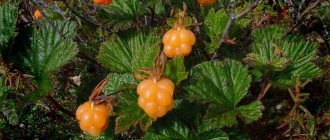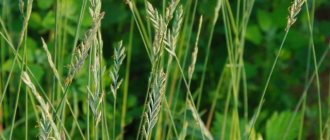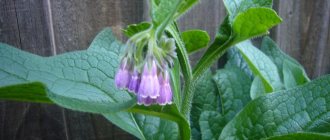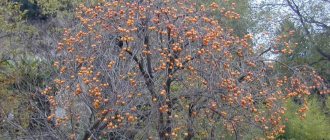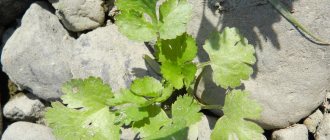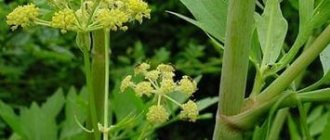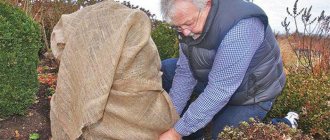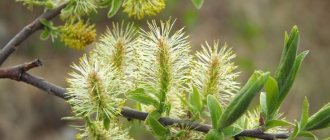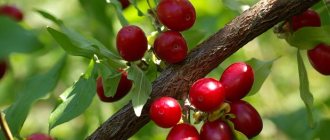What does it look like
Viburnum bushes are spreading, sometimes growing into small trees up to 4 meters in height. The flowers of the plant are pinkish or white, collected in lush inflorescences. The fruits are drupes, red or black, rarely yellow, with one seed. The pulp is sweet or sweet and sour with bitterness. After frost, the fruits that have not yet been harvested become more palatable, and the bitterness goes away. The berries ripen in late autumn, but there are earlier varieties. Not all types of viburnum are edible and bear fruit.
Description of the viburnum bush
In the wild, the plant is found in any forest or clearing. Viburnum is cultivated as an ornamental shrub and at home, planted near rural houses, in the territories of dachas and even city parks. The plant belongs to the Honeysuckle family; out of 200 known forms, about 60 are actively cultivated. The average lifespan of a tree is 40-60 years (subject to proper care).
The distinctive features of the plant are offered in a general description of viburnum - a shrub or slender tree:
- Plants are very diverse in their appearance, parameters of flowers and fruits.
- The arrangement of the leaves is usually opposite; in some species it is whorled. Stipules are entire.
- The bush blooms with snow-white, occasionally pale pink shields. There are two types of inflorescences - sterile (with a massive perianth) and fruitful (inconspicuous, narrow-tubular).
- The fruits are often bright scarlet, but not always. There are varieties whose berries have orange, black sides or even a bluish coating. The vast majority of varieties have edible fruits.
Every person in Rus' knew how to grow viburnum, because many folk beliefs, traditions, and rituals are associated with the plant. Viburnum has long been called the “wedding tree.” The girls presented their chosen ones with festive towels, skillfully embroidered with viburnum leaves and red clusters. Bouquets of fruits, tied with a scarlet ribbon, were placed on the dishes with which the newlyweds treated their dear guests.
In the central regions of the country, “kalinniki” have been baked for a long time: pureed berries were placed inside cabbage leaves, after which they were brought to condition in the oven. The finished pie looked like a black cake with a characteristic aroma. Viburnum has always been used in garden design, as well as in the household - comfortable wallets were made from its flexible branches, shoe nails and other necessary little things were made from lignified branches. Fleshy berries lose their astringency and bitterness after freezing, as well as during drying and thermal processing, when delicious fruit drinks, jams, and marmalade are prepared from them.
All folk healers know how to care for viburnum, since the fruits of this plant have an incredibly beneficial effect on the body:
- strengthen the immune system;
- reduce fever;
- normalize blood pressure;
- work as a diuretic;
- harmonize the emotional state;
- cleanse the blood;
- eliminate constipation.
Viburnum vulgare is very effective against anemia, hypertension, and neurological disorders. It removes toxic substances and waste from the body. The fruits are safely stored all winter if they are frozen or ground with sugar.
Varieties
There are about 160 varieties of viburnum. The most common of them are deciduous bushes, but there are evergreen and winter-flowering ones. Varieties are distinguished according to several indicators:
- weight, taste and color of berries
- bush height
- growth rate
The most popular varieties of viburnum:
- Red bunch, medium spreading, low bush, round, dark red berries. The pulp is sweet and sour, slightly bitter;
- Zholobovskaya, compact bush up to 2.5 meters in height. Fruits in mid-September, the berries are bright red, spherical. The pulp is very juicy, almost sweet, slightly bitter;
- Roseum, a vertically growing, wide and large shrub, up to 3 meters in height, does not bear fruit;
- Ulgen, a compact bush, grows up to 4 meters. The fruits ripen in mid-September. The shape of the berries is spherical-elliptical, with red skin. The pulp is juicy and slightly bitter;
- Maria, a medium-spreading, vigorous bush, bears fruit early. The berries are round, light red in color. The pulp is sweetish-sour, slightly tart and slightly watery;
- Dachnaya, an erect bush up to 3 meters in height, produces round berries with bright red skin. The pulp is sweet and sour in taste;
- Shukshinskaya, a vigorous bush up to 3 meters in height, with thick branches. The fruits are crimson-red, round in shape, slightly bitter in taste;
- Red coral, compact medium-sized bush, round fruits with bright red skin. The pulp is very aromatic, sweet and sour, with a slight bitterness;
- Eskimo, a semi-evergreen bush, with upturned branches and a spherical crown. Grows up to 1.5 meters in height. The plant does not produce fruit and is grown for decorative purposes;
- Leningradskaya select, medium-spreading, medium-growing shrub up to 2.5 meters in height. The fruits are large, with red-ruby skin. The pulp has a pronounced sweetness.
Landing Features
When choosing a place to plant viburnum, you should start from both personal preferences and take into account the features of comfortable care for the plant. Viburnum can grow in poor soils, but it is recommended to choose moist, fertile loam or black soil. It is better to place it in a bright place, but if you choose a place in partial shade, it’s okay. Good places for planting would be: front gardens near multi-storey buildings, near the gate of a private house, benches or gazebos in the garden. Bushes planted nearby as a hedge will look good.
The planting period most often falls in autumn. In the spring, you can also perform this procedure, but you need to make sure that the buds have not yet formed on the seedling. The landing algorithm looks like this:
- A hole measuring 50 by 60 is dug.
- River sand (half a bucket), compost (1 bucket), ash (300 grams) are poured onto its bottom and mixed.
- When planting in poor areas, the soil should be fertilized first.
- The seedling is placed in the hole so that the root stem is level with the ground.
- The area at the base of the seedling is carefully but carefully compacted and watered abundantly.
- The root area is mulched.
After completing these steps, you can shorten the shoots, but this is not necessary, at your discretion.
Benefit
The fruits contain vitamins K, A, E, C, tannins, organic acids, essential oils, tannins, polyphenols, potassium, iron, zinc, pectins. The berries contain plant substances that are very similar in composition to the female hormone estrogen. Viburnum tones blood vessels, relieves pain, normalizes the functioning of the heart muscle, promotes blood renewal, reduces the risk of anemia and atherosclerosis, and reduces heart pain. The fruits are used to unclog blood vessels and clear cholesterol plaques. The fruits are useful for people with digestive problems, gastritis and colitis.
Viburnum seeds are taken orally when recovering from serious illnesses; they reduce pain during migraines, increase performance, elevate mood and reduce fatigue. Decoctions from the bark stop bleeding and are used in the presence of long-term non-healing wounds and surgical sutures.
Not only the fruits of viburnum are useful, but also flowers, young shoots, and leaves with bark. Regular consumption of fruits helps to cope with depression, stress, insomnia, and get rid of nervous tension. Fruits strengthen the immune system well.
Properties of viburnum berries:
- choleretic
- astringent
- antimicrobial
- antispasmodic
- sweatshop
- expectorant
- anti-inflammatory
- restorative
- diuretic
- sedative
- painkiller
Plant care
Viburnum care
Care procedures include standard operations for watering, fertilizing and pruning the plant. Caring for viburnum is quite simple, and even a novice gardener can handle it.
Watering
Decorative viburnum
For normal flowering and yield, viburnum requires regular watering. On average, one watering per week is enough, but ultimately it all depends on the level of natural precipitation. In any case, it is not advisable to allow the top layer to dry out, but excessive flooding of the plant with water should also be avoided.
The horse system of viburnum is extensive, so for watering it will require a relatively large amount of moisture - up to 30-40 liters of water for one bush.
Feeding
Fertilizing viburnum
When growing viburnum, up to four feedings are used per season. All of them consist of dry fertilizers and are all combined with irrigation. Let's take a closer look at feeding:
- Produced before the leaves open. Nitrogen fertilizers are used, for example, 50-60 g of urea per bush
- During budding. It is recommended to use potassium fertilizers: this can be potassium sulfate (up to 45-50 g) or 500 ml of wood ash per bush
- At the end of flowering. Under each bush add 40-50 g of nitroammophoska
- Before wintering. A layer of compost or humus 5 cm high is poured into the tree trunk circle, which is watered with a nutrient composition. To obtain the composition, 50 g of potassium sulfate and 45 g of superphosphate are dissolved in one bucket of water. Each bush requires 2 buckets of watering mixture
In spring, instead of mineral fertilizers, the plant can be fed with organic fertilizers. Often, for this purpose, at the beginning of the season, bushes are fertilized with rotted manure. In the fall, it is allowed to add up to 500 g of wood ash under the bush along with humus.
Trimming
Pruning viburnum
Spring pruning is performed before sap flow begins. It includes sanitary and formative. Forming involves giving the viburnum bush the required shape.
For old bushes, anti-aging pruning is performed every 5-7 years.
Every season for three years, a third of the old branches are removed, and the same number of young branches are left from the basal shoots.
Autumn pruning is done after leaf fall. It is exclusively sanitary in nature - diseased and damaged branches are cut off. The cut areas are treated with garden varnish.
Application in medicine
A decoction of the bark of the plant with honey and sea buckthorn oil is very effective for colds. The drink can be taken as a means to prevent such ailments. For sore throat, gargle with viburnum decoction or make compresses. Berry juice helps with skin diseases, boils, and dermatitis. A decoction made from flowers is effective for loss of voice and periodontal disease. If you have a nosebleed, soak cotton swabs in the broth and insert them into your nostrils. Frequent consumption of fruits is a good prevention of cancer.
The berry is widely used in cosmetology; masks, tonics, cleansers, scrubs, and shampoos are made from it. After using products with viburnum, the skin becomes more velvety, rejuvenated and moisturized.
Viburnum copes with various ailments of the human body:
- endocrine diseases
- mastopathy
- severe menopause
- uterine bleeding
- irregular menstrual cycle
- painful menstruation
- angina
- hypertension
- bronchitis
- acute tonsillitis
- headache
- heart diseases
- skin diseases
- hysteria and neurosis
- fever
- cold
- haemorrhoids
- dyspnea
- flu
- sclerosis
- severe dry cough
- eczema
- diathesis
Viburnum diseases and their treatment
Viburnum in the garden can be subject to troubles in the form of diseases and harmful insects. Diseases and pests of viburnum are not very numerous, and it is not so difficult to cope with them, but it is still better to prevent the occurrence of a problem than to deal with it later. Among the diseases that affect viburnum more often than others:
Powdery mildew is a fungal disease, the symptoms of which look like a whitish coating on the leaves of the plant, with drops of liquid, which gradually turns brown. The infection rises from the bottom of the plant upward. In a diseased plant, the inflorescences do not form ovaries, and the viburnum does not bear fruit. The winter hardiness of the plant decreases. Decorative species are losing their attractiveness.
Control measures. A good effect is achieved by treating viburnum with a solution of 50 g of colloidal sulfur in 10 liters of water or with fungicides such as Skor, Topsin, Tiovit Jet, Topaz, Quadris, Bayleton and other preparations of similar action;
Frost burn is a disease caused not by infection, but by exposure to low temperatures. This causes the bark to crack, the wood to become exposed and die. On the side shoots of frostbitten branches, the leaves are pale, chlorotic, they turn brown and dry quickly. By mid-summer the entire bush may dry out.
Control measures. Severely damaged stems are cut out at the beginning of spring, and those that are slightly damaged are covered with liquid clay in places of damage;
Ascochyta spotting of viburnum - angular or rounded gray spots with a purple or dark brown border appear on diseased leaves. At the site of the spots, the tissue dies, the fruiting bodies of the fungus form on it, it cracks and falls out.
Control measures. Fallen leaves affected by the disease are collected and burned in the fall. In the spring, at the beginning of sap flow, viburnum is treated with copper oxychloride or Bordeaux mixture.
Gray rot - in cold and rainy summers, large brown spots of unclear outlines appear on the leaves of the viburnum, which grow quickly, and the tissue in the middle dries and cracks. Berries affected by rot become brown, and the mycelium grows through them.
Control measures. In autumn, be sure to collect and burn fallen leaves and berries. To stop the spreading disease, treatment with Vectra is carried out.
Fruit rot - this disease causes the flowers, leaves, young shoots and fruits of viburnum to dry out. The first sign is small, dense, gray pads, which turn black and dry out as the disease progresses.
Control measures. Mummified berries must be removed from the plant and from under the bush. When the first signs of disease are detected, viburnum is treated with Bordeaux mixture or copper oxychloride.
Decoction recipes
A decoction of viburnum leaves and bark
Ingredients:
- 250 ml water;
- 8 g crushed leaves
- 4 g mint leaves;
- 6 g honey.
Preparation:
- Boil water and add mint leaves, leave for 25 minutes.
- Add the bark and boil the liquid for 10 minutes.
- Strain and cool the broth, add honey.
- The product helps with skin lesions, bleeding and colds.
Decoction of viburnum flowers
Ingredients:
- 200 ml water
- 1 tbsp. l. colors.
Preparation:
- Boil water and add flowers.
- Heat the mixture for 15 minutes on fire.
- Cool the broth and strain through a sieve.
- The product is effective for poor appetite, gum disease and bronchopulmonary diseases.
Recipes
Viburnum jelly
Ingredients:
- 2 glasses of water;
- 1 kg viburnum;
- 800 g sugar.
Preparation:
- Rinse the fruits in a colander under running water.
- Place the berries in boiling water for 5 minutes to soften them and lose their bitterness.
- Grind the viburnum through a sieve, add water and sugar to the juice. Mix thoroughly.
- Simmer over low heat for 50 minutes until well thickened.
- Pour the jelly into jars and store in the refrigerator.
Viburnum sauce for meat
Ingredients:
- 3 cloves of garlic;
- 5 sprigs purple basil;
- 6 sprigs of dill;
- 300 g viburnum;
- 2 tbsp. l. Sahara;
- 200 ml water;
- 1 hot pepper;
- 3 pinches of salt.
Preparation:
- Rinse the berries, place them in a saucepan and cover with water.
- Cook over low heat until it boils.
- Reduce heat to low and cook berries for another 15 minutes.
- When the viburnum has cooled, grind through a fine sieve.
- Place the sauce over low heat, add crushed garlic and chopped pepper.
- Finely chop the greens and add to the mixture, add sugar and salt.
- Mix the sauce well and bring to a boil, keep on low heat for another 5 minutes.
- Pour the finished sauce into a jar.
Growing viburnum: planting, care and pruning in spring
Viburnum is propagated in several classical ways, which will be discussed below. When sowing freshly harvested seeds in autumn, seedlings will appear a year later. The first couple of years, seedlings grow very slowly, but from the 3rd year this process accelerates noticeably. How to plant viburnum correctly by sowing seeds, read on:
- The grains are removed from the pulp and washed with running water. Dried seed is suitable for 2 years.
- Stratified seeds are stored in room climate for 2 months. At this time the roots begin to peck.
- Containers with seedlings are transported to the basement, where they are kept for 1 month.
- Then they are picked into special containers, only the roots are buried, and sent to the greenhouse.
From February to March, the development of seedlings continues, they are freed from scales and turn into deciduous seedlings. They can be transferred to a suitable area, where young viburnum will always be located (planting and care in the future are carried out according to the general rules).
Vegetative propagation provides an opportunity to preserve the unique characteristics of the variety. For many decorative forms, vegetation is the only way of reproduction. To form daughter layers, the shoots are rooted without separating them from the mature bush. Annual healthy growths are bent to fluffy, nutritious, moist soil until the buds open. Fixed with strong metal staples.
When the young shoots developed from the buds reach a height of 10-12 cm, they are spudded. How to properly prune viburnum, or rather its cuttings: in the fall, after the cuttings have taken root well, they are cut off from the mature bush using pruning shears.
It is advisable to propagate decorative varieties by cuttings. Green cuttings taken from a 2-3 year old tree take root well. The material is harvested from June to July, cutting the stems into 10 cm pieces. They must have internodes (at least 2 pieces). The upper cut is made at a right angle, the lower one - obliquely. The cuttings are planted in a greenhouse or portable container under oilcloth. A soil mixture of equal parts of sand and peat is used.
How to prepare viburnum cuttings, plant and care for them, look at the photo:
Before planting viburnum, you need to decide on a place where the plant will live comfortably. Most varieties of viburnum exist without problems in conditions of moderate shade. Garden forms are recommended to be planted in open areas of the garden plot, otherwise the bushes will not demonstrate maximum beauty and fertility.
When choosing an area for planting ornamental viburnum, preference is given to areas with good moisture. If there is a body of water in the garden (an artificial pond, a natural lake), then you cannot find a better zone - the plant is not at all afraid of the surface occurrence of groundwater.
- Landing. Suitable time: spring, autumn. The optimal parameters for the planting pit are 0.5 x 0.5 m. In addition to peat, mineral components are added to the trench. The seedling is well deepened, which favors the active development of auxiliary roots. The distance between bushes should be at least 1.5-2.0 m.
- Watering. Viburnum needs abundant watering; it is sensitive to drought. Moisture deficiency has a bad effect on the appearance and worsens the quality of the fruit. During the hot season, viburnum is watered especially often.
- Trimming. The procedure is carried out every year. In the process of autumn pruning of viburnum, dried branches are removed, and of all the healthy, young shoots, only a few are left (for a 10-year-old tree - 8-9 pieces). Bushes should be rejuvenated by cutting off all old branches at a height of 15-20 cm from the soil surface. Sanitary pruning of viburnum in spring or autumn is carried out as needed.
- Additional food. Fertilize the plant before the beginning of the growing season (viburnum especially needs care after pruning) and before the leaves begin to fall. After winter, minerals are added - nitrogen, phosphorus, potassium. In the fall, they limit themselves to the last two microelements, and use only half of the spring portion. The preparations are distributed around the trunk, after which the soil is loosened, watered abundantly, and sprinkled with hay or peat.
- Pest and disease control. The viburnum bush often suffers from bark beetle aggression. It unceremoniously eats all the foliage, leaving only the veins untouched. To destroy the parasite, the bushes are sprayed with 0.2% chlorophos. In addition, the comma scale insect may periodically settle on the trunks. It is adversely affected by karbofos 0.1%. To prevent an unpleasant disease called “powdery mildew,” spraying with solutions prepared from garlic and onions is recommended throughout the season.
Although planting viburnum and caring for it in the open ground is not a labor-intensive activity, it is advisable to show diligence and care so that the plant does not feel discomfort, is pleasing to the eye and bears delicious berries.
Harvesting begins after the fruits ripen (approximately from the 10th to the 20th of September). Overripe berries partially lose their value as juice leaks out. In addition, the longer the fruits remain on the tree, the more birds will feast on them (birds can leave some of the trusses after harvesting). When collecting bunches, you should not break off branches or cut them off, since such actions cause enormous damage to the next year's harvest.
Storage
Viburnum is prepared for the winter in dried, frozen and dried form, ground with sugar. The berries retain their beneficial properties. You can dry them in clusters, tying them into bouquets and hanging them in the cellar or attic. Fresh viburnum is stored for a long time in the refrigerator, in spacious containers.
Dried viburnum
- rinse ripe fruits and remove stems;
- Blanch the viburnum for 3 minutes to remove bitterness;
- dry the berries a little and sprinkle with sugar (for 1 kg of fruit you need 250 g of sugar);
- leave the viburnum in sugar for a day at room temperature;
- drain the juice, sprinkle the fruits with sugar again and leave for a day, drain the juice;
- the remaining juice can be preserved. Pour hot syrup of water and sugar over the berries, leave for 5 minutes, strain;
- Place the viburnum in a thin layer on a baking sheet and place in an oven preheated to 85 degrees for 30 minutes;
- Pack the finished berries into jars and close tightly.
Dried viburnum
- rinse the berries along with the stalks, and then carefully remove the stalks;
- spread the wedge in an even layer on a tray or baking sheet;
- dry in the oven with the door open at 60 degrees;
- store in linen bags or glass jars.
Transfer
A planting hole for a three-year-old seedling is dug 50x50 cm in size and 50 cm deep. 2.5-3.5 m are left between plants. A mixture of excavated soil with humus and peat is poured onto the bottom. Pour out four buckets of water and leave for a week.
Then the remaining soil is piled up so that the top of the head protrudes from the hole. The roots of the seedling are spread over the top and a peg is stuck in for garter. Pour the remaining soil over the roots and pour out 1-2 buckets of water. A thick layer of peat mixed with compost and humus is poured on top so that the root collar is hidden by 5-6 cm.
A viburnum bush that has taken root on the site will eventually require a minimum of attention to itself, each year delighting you with an increasing harvest of healthy berries. Shade tolerance allows you to set aside almost any free area in the garden for planting, and many people plant it behind a fence, because the plant looks beautiful all year round.
